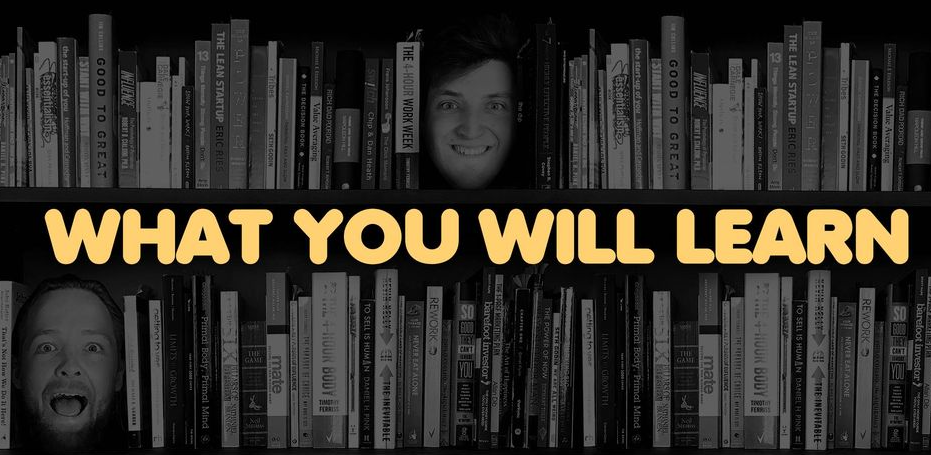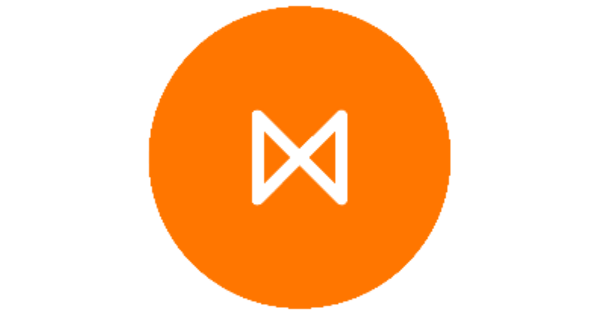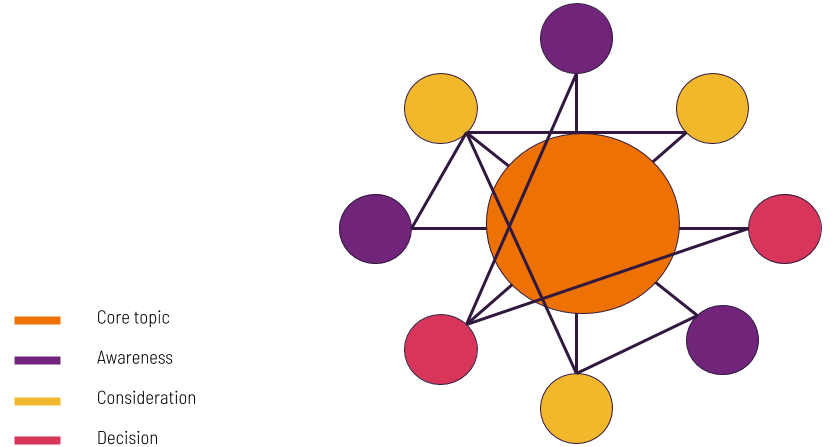Australia’s leading growth marketer Anna Cheng joins the Forward Thinking podcast to share how she grew Spaceship to $100m in funds under management in 4 months using growth marketing.
We cover a wide range of marketing topics including activation, onboarding, and her use of pirate metrics.
Anna also deconstructs exactly how she built a pre-launch viral waitlist that resulted in 40,000 contacts.
For any business owner who is looking to take their growth marketing strategy to the next level, this episode is a must-listen.
Brendan What was your first exposure to marketing?
Anna I got into marketing by accident. I started off my career actually in accounting. My mum was a CFO and I thought I really wanted to be like her when I grew up. Straight out of high school, I went straight into a boutique accounting firm. I spent two years there and I think at first it was really interesting as with most things for the first six months when you’re just starting new and you don’t know anything and there’s a massive learning curve. But then after that I got really bored of it. I went zero to 100 and left starting my own company with a bunch of friends.
When I was 19 years old, I started a company called Foodie, which connected home chefs with consumers. Back then, I didn’t really know what marketing was or what particular frameworks there were to growth. I used to do all these really ad hoc marketing strategies like just to test out whether people would pay a certain price for homemade spaghetti, whether people would pay for pickup, whether people would pick up from a central location or pay for delivery, things like that. I’d spend nights in the uni kitchen cooking up like 60 portions of spaghetti just to test these particular hypothesis. I didn’t realize it was a proper way to test and learn from experiments like this. I eventually left that business just because it felt more like a business venture rather than something I was passionate about. Then I moved onto this B2B mental health startup called Uprise. That went through the Moody Accelerator Program and that’s where I learned a lot more about what growth hacking actually is and started attending a lot of growth talks and honed in on those growth skills.
Brendan There’s a lot of conjecture about what growth marketing or growth hacking is. What’s your definition growth marketing and how does it differ to growth hacking?
Anna Well, for me, I think the semantics between growth marketing and growth hacking, for me, I don’t think there’s a massive difference. I think when it comes to growth, it’s more about the way you think and the way you approach how you grow your business or your product and how you set up your teams and structure your hypothesis and validation process.
I think it’s more about that rather than what do you call it and what tactics you implement. From a tactics point of view, you can’t really copy and paste things from product to product just because there’s different growth strategies for different business models. I think for me, what growth really is, it’s a much more holistic view of looking at a business than what traditional marketing is. Traditional marketing would be more about looking at things like number of downloads, number of views, number of signups, which if you were to graph it, it would just be a linear increase in graph, right? Whereas growth is more about the growth rates, the overall business growth rate.
Then that growth rate can be influenced by each of those metrics that you’re looking at for marketing, but ultimately it’s about, “Where am I losing the most customers in my current growth marketing funnel?” Whether is it in downloads or is it in engaged users, and then how do I patch up those holes so that this funnel looks more like a tunnel?
Brendan Interesting. I’ve been to a couple of your growth marketing talks before and they’re fantastic. One of the metrics, I guess, methodologies that you talk about, pirate metrics.
Anna Yeah.
Brendan Can you tell us what pirate metrics are?
Anna Yeah. For those of you who don’t know what pirate metrics are, and the reason it’s called pirate metrics is because the first letter of each part of the funnel spells out AAARRR, so it’s like A, A, A, something AAARRR.
Brendan AAARRR.
Anna Yeah, AAARRR. So it starts off with awareness, which is more around brand familiarity. It’s like, “Where have you first heard about us?” The second stage of the funnel is acquisition, which is the first expression of interest in your products. That could be a mailing list sign up, it could be someone putting down their email saying, “I’m interested in your product, but hasn’t actually gone onto the platform.” That could be an acquisition metric. Third step is called activation, and this is the most important step. Any 25% increase in your activation rate will convert into a 48% increase in your annual recurring revenue.
Most people familiarize themselves with everything about getting more users and acquiring more users or getting people to refer more users when actually it’s more important that you activate these users and make them the customer that you actually want to see using your product. The activation metric is the most important one. I call this the Aha moment. This is the moment when your customer experiences the core benefit of your product for the first time.
For some real case examples, I think for example, Twitter, during the onboarding process you might notice that they really push you to follow at least 28 people during your signup process, and that’s because 28 follows is the activation metric. They spend the whole onboarding process to try to push you to follow 28 people. Once you do, it creates like an instant timeline for you on Twitter, so the moment you log in, then you already have a lot of content to see and you would actually have to go out of your way to not follow 28 people because you have to uncheck those suggested boxes during the onboarding process. That’s the activation metric.
Then it goes into retention. Once you’ve activated your user, how do you make sure that they stay a user? This really differs between different business models. For example, if you’re at Facebook, your retention metric might be daily active users because you’d expect people to use your product daily. Whereas if you’re an eCommerce store, you might not expect people to purchase from you daily. It might be something like recurring purchases every, I don’t know, month or three months depending on what your product is.
Your retention metric really differs as well depending on what business model you fall under. The other two is you’ve got revenue, so that’s your paying users. I think that’s pretty straight forward revenues, just the money that is brought in. Then the last one’s about referrals. How are activated or pertained users currently referring you to friends, and what’s that particular referral metric that you’re getting?
First of all, how many people are referring you, on average how many people are they referring to your product, and then of those people how many actually activate those users? I think that generally forms like the pirate metrics funnel and you’ll notice that at each stage of the funnel there will be a lot of drop offs.
I know how I’ve described it, it sounds very linear, but then the whole process itself is quite cyclical. There’ll be people that turn from the activation metric and people who would turn from the retention metric. Then you have to figure out creative ways on how you can pick those people back up.
Brendan Interesting. So you touched on activation. What was that statistic on activation?
Anna Activation was that 25% increase in your activation metric will lead to a 48% increase in your annual recurring revenue.
This is just what works out mathematically. Yeah.
Brendan Yeah. Cool. For small, medium, and early stage businesses listening, what tips can you give them around improving their activation process?
Anna I think the first thing is actually just figuring out what the core value of your product is. At what point… The best way to find this activation point is, you look at your retained users or for people who are early in their business, just think about how you want your user to behave on your platform, figure that out, and then what’s that one behavior that they have to do in order for them to realize that particular value and stay as a customer.
I think for a lot of people they worry a lot about monetization, they’re like, “Oh, what if people gain my product? What if people from the freemium, they’ve already used up all the good features of my product and then I can’t monetize them after that?” But I think at the beginning you don’t even know if you have product market fit yet. At the beginning you just really want to see people love your product, and if they do love your product, there’s always ways you can monetize.
I think it’s about being able to recognize the behaviors that people take that lead them to really enjoying what your product is and then willing to upsell themselves later on. I think your activation metric is just something that you need to figure out based on what the core value of your product is.
Then once you’ve figured out what that is then everything you’d built for your onboarding process should lead to your activation metric. For example, if you take a look at MailChimp, you don’t really experience the core value of MailChimp until you’ve really signed up and created your first campaign. You don’t actually know what’s so good about MailChimp until you’ve sent your first email.
If you go through MailChimp’s onboarding process, you’ll notice that from signup all the way to activation, which is sending out that first email, they force you through this onboarding process, which says, “You have to complete steps one to five,” which includes setting up your templates, setting up your email details, adding your contacts and so forth, before you can progress on to anything else on the platform. You’ll notice that most of what MailChimp does is like just push you towards that activation metric, which is creating your first email. Then once you’ve done that, then you can more freely access the other features.
Brendan We’ve talked a bit about onboarding. Obviously a massive area that small, medium business struggle with. What are the first steps that they can take to start to develop out their onboarding process and activate more users?
Anna I think the best way to do onboarding is, well, first, I think you need customer personas. You need to figure out who exactly you’re building out your onboarding process for because people will react differently based on what product it is and what journey you’re trying to take them through. For example, the way you would build an onboarding process for a B2C company versus a B2B company is very different. You would want to find out very different data. For example, instead of maybe sign up via Facebook, you’d do sign up via Google or you have a requirement that you must use your work email. I think onboarding, first of all, you just really need to figure out who your customer persona is.
Then once you’ve figured out who that is, then you really need to empathize with them and see what information are they willing to provide, but then not so much that it creates friction for them to get to the core value of your product. Because again, what you’re really trying to do is get them to experience the value of your product as soon as possible so that they can make the decision to purchase it or to continue using it like quite easily. You want to minimize the amount of friction they have to go through to make that decision.
When you’re building your onboarding process, once you’ve figured out customer persona, once you’ve understand what they’re trying to achieve with your product, then I think what you can do after that is you do like a blueprint of what you think that onboarding process is, but then I would always cross-reference competitors to see how competitors are doing it and what are the good parts that they’re using that you can also incorporate in your own.
Things like, for example, progress bars are great. It gives people an expectation on how long they have until they can go into your product, and it’s also a bit of like psychological gamification with progress bars, so people enjoy finishing things off after they’ve invested a certain amount of time.
Brendan Yeah.
Anna Other things that we typically do is we just screenshot like competitor onboarding, put them all in like a folder and then just like cross-reference to see which makes more sense. I think for B2B productivity tools, for example, I think like Asana has a really good onboarding process.
They’ve got one that really forces you to use your work email because they know exactly what customer persona they want, which is, “We only want businesses, and we only want businesses that are serious about using this productivity tool,” so that only let you sign up with work email.
If you sign up with an email that ends in @gmail.com, you’ll go through another page which says, “Please verify email,” and then a popup will come up and say, “This seems like a personal email. Please enter a work email.”
Yeah, if you go through a lot of different customer journeys like that, you’ll realize what works and what doesn’t work.
Brendan One of the areas that I know that you take very seriously is actually researching your competitors. I know a lot of businesses and startups don’t put enough emphasis on this because you can find out what’s working in the market straight away. These guys have been testing different channels, spending a lot of money, so you can leverage that data. Can you talk us through a time at maybe your first startup that you worked with Spaceship and how you guys researched competitors and how that formed some of your thinking for your marketing strategy?
Anna Yeah. With Spaceship, I think something a little bit cheeky that we did in the early days as we used this tool called SEMrush. There are lots of different tools that do pretty much the same thing as SEMrush. But basically what we did was we use SEMrush to view the analytics of how our competitors were doing their ad-word campaigns and what words they were ranking for in terms of SEO as well. We realized one of our competitors, 70% of their site traffic was coming from once very specific ad-words campaign. They were bidding a pretty cheap price for it, so we thought it would be funny to bid a little bit higher on those ad-words, so then we would rank first for that particular ad-word and then take most of their traffic.
It worked quite well actually, so we did get a lot of their traffic, but then we also got an angry email from their CEO, so we stopped that campaign out of goodwill. But yeah, like a lot of things like that I think it’s just like things that you find once you actually start doing your research on competitors. I genuinely believe that the best strategy is, begin with intuition. They start with genuinely understanding your industry, your customer persona, how channels mix with specific audiences, and just having a general feel for where your product sits in comparison to the rest of the market.
Then after that, I think you can do a lot of data related things. Then after that, then you can start testing hypothesis in a much more data-driven way than previously when you’re generating that hypothesis. But I think it has to be a mix of both intuition and data in order to get that. I think the best way to feed your intuition, and also like in a slightly data-driven way is actually just to do your research and to look at tools like SEMrush to see what competitors are ranking for, to see what they’re doing well, what they’re not doing well, and then see how your business model fits somewhere in between there.
You can’t always replicate your competitors’ strategies because maybe they have a different business model to you. For example, Canva is a freemium model. Photoshop is paid subscription model. The way that they would market their product is just different because Adobe would want you to pay upfront, whereas Canva just wants you to sign up. I think when it comes to developing a strategy you take into consideration your competitors, but you don’t let that drive your entire strategy.
Brendan Yeah. Awesome. I wanted to touch a bit more on Spaceship. You were employee number three at Spaceship, so obviously one of the hottest startups in the last three, four years in Australia. I guess we have you to thank, all the millennials who are there seeing Spaceship absolutely everywhere. You did a fantastic job of penetrating the market in the early days. Can you tell me the story of… Obviously employee number three, super early, you were tasked with getting promotion, building out the marketing strategy, the prelaunch strategy, can you tell us the story of how that all came together?
Anna Yeah. Me beginning at Spaceship actually was an interesting story as well. I was picked up at my first growth talk ever. I tried really desperately to get out of that growth talk. I was not comfortable with public speaking about growth at that time. I felt like I had only just started my growth career and I wasn’t anything good or anything. I actually tried to get out of that growth talk. I told the organizer, I was like, “Sorry, I’m going overseas that week. I probably won’t be able to make it.” He was like, “Oh, that’s great. I’ll just move the date to suit you.” I had no choice. I had no more excuses after that. I had to do it. So I went and did it, and then the CEO of Spaceship actually picked me up from that particular event and he said, “Let’s grab a coffee.”
I spent the rest of that interview with him just trying to convince him that I wasn’t that good. “It was my first growth talk ever. I’m not as good as you think I am thing.” Then for some reason he was like more interested and he said, “I think I enjoy the fact that you’re starting from blank slate.” He’s like, “Do you think you can get me to $100 million in funds under management by March 31st?”, which was around four to five months after that meeting.
I was like, “Oh, to be honest, probably not.” I was like, “But I’ll try my best.” I think maybe because I was given that really difficult task, I was like, “What would happen if I just put everything into this, didn’t get distracted and then just did this one thing for the next couple of months and see if I can achieve it?” I was like, “Even if I don’t make the $100 million, I’m pretty sure I would try my best and get somewhere close.” I ended up…
I had a banking internship the next day that I was meant to start with a big bank. I called them up. I said, “Sorry, I’m not coming in tomorrow. I’ve got something new.” They had already organized a laptop and a phone for me. Then I was like, “Sorry, I’m not coming in.” I also deferred uni as well, which I realized-
Brendan You were still in uni at the time?
Anna Yeah, I was still in uni at the time, so I just made the decision to defer. I didn’t tell my mom yet. After I told my mom, I got into big trouble but eventually paid off and now my mom doesn’t tell me to do anything anymore. So it’s all good. But that’s how my career at Spaceship basically started.
I actually spent my first week at Spaceship just calling up around 200 people, going through, “Why did you sign up to Spaceship? What are your goals for superannuation? What do you care about when it comes to superannuation? Is it the transparency, is it your returns, is it your investment philosophy, or what exactly is it? What do you currently not like about your super fund? Then how would you describe Spaceship to a friend or a colleague?”
What I basically ended up doing was I called everyone up manually, so I was on the phone with them for around 10 minutes each. Then I would type up the exact response on a Google form, and then it would translate into a Google sheet and then I would just cluster them up based on particular themes. If they had said transparency and high returns, for example, I’d cluster them up as transparency, high return. Then I would quantitatively see what percentage of people fit in to each category, and that was how I built my first customer persona for Spaceship.
It was like 25 to 35-year-old millennials work for technology was really interested in investing in technology because they worked in technology and understood it and believed that the future would not be in BHP in the big four banks. It would be in Google, with Amazon, Facebook, and so forth. So I ended up building out that persona. Once I had that persona, then it was very easy to think about, “Given this persona, what helps them drive particular psychological decisions when it comes to investing in superannuation, for example?”
I think that in the early days when you have a superannuation product, which is very high end, is in a space that’s crowded with people who’ve been there for decades, it’s very difficult for you to convince someone to try something new, right, because you’re putting your retirement savings. If you have say $50,000 in superannuation, fees would be around like $800 per year. You wouldn’t really make that decision to give a fund manager $800 a year just from a Facebook ad or from anything like that.
I think a lot of it had to come from, “What are those irrational psychological triggers that you can use in order to make people make that decision a lot easier than it is?” What you want to avoid is you want to avoid them doing very specific price checks. Them looking at a different superannuation funds website, going through the PDS, comparing it to your PDS, and even if your product is better than theirs, they’re just so much mental deliberation and that has to go through so much effort to do that, that they’d probably end up procrastinating and not rolling over anyway.
I think that was my main goal when I thought about, “How do I make people make the decision to roll over to Spaceship, which is a completely new fund, is a startup sort of thing?” We didn’t even have a technical platform at that time.
The first thing I thought was, “Okay, well, I think people make decisions based on who they look up to.” I think this is particularly true when you look at eCommerce stores and how, for example, Showpo’s doing their marketing. A lot of the people they use are like social media influencers, and they just wear the clothes and then a lot of girls would buy those clothes because they’re like, “Oh, I want to be seen in a similar light to that social media influencer.”
Anna That’s very similar for most people as well. In the tech industry, I think a lot of people look up to people like Jane Lu, CEO of Showpo, or Mike Cannon-Brookes, the CEO of Atlassian. We actually featured a lot of these influences on our ads.
We were like, “Your super has invested… Like you’re retiring in five years, but you’ve still got 40 years until you’re retiring. Do you know what you’ve invested in now? Do you know where your super is? Do you know who’s managing it?” That sort of ads were the ones that we ran with Mike Cannon-Brooks and Jane Lu, and they performed extremely well. We’d get an email for around like $3 or so, so that was a really good campaign that we ran.
Well, obviously, like I mentioned before, people don’t usually make decisions from one Facebook ad, especially for financial services. Then I was like, “Okay, well, what’s the second barrier? What’s a second little knowledge that people need in order to make this decision?”
I was like, “Okay, well, usually when you see an ad on Facebook, or you see an influencer do something, you’d ask a friend, “Hey, what do you think about Spaceship?” Or like, “Have you heard of Spaceship? What do you think?” We ran this wait list program, which was basically something that we had modeled off of Robin Hood’s one. I think really good growth strategies are ones they’re not really anything new, they’re just things that have been working for like the past couple of decades, but it’s just been moved into like a digital format.
For example, referral campaigns have been operating since a long time ago. Early days people would do chain mail via putting a piece of paper in people’s letter boxes and then getting them to pass it along. Then when we entered, you’d get, “Forward this message on to seven friends or you’ll be ugly for the rest of your life,” sort of thing. It’s actually just been like redone into this new digital format, which is, now we’ve got new referral programs.
Uber’s got their $10 referral program and then Robin Hood’s got their wait list. We just did the same wait list as Robin Hood, except we did it in a group format just because we felt saying someone was like 15,000th wasn’t particularly motivating. So we just did like a grouped referral program, where if you put in your email, you’re group 36, if you completed the form with all your personal details and verified your number, you’d get bumped up to 10 groups, so you’re in group 26, and then for every person you referred after that, you’d get bumped up another five groups. If you referred five people, you’d get into group one, which meant you get early access to Spaceship once we launched.
That was the general psychology and gamification behind that referral program, and that worked really well for us, especially in conjunction with the Facebook ads because Facebook ads were bringing in a lot of momentum and a lot of traffic into the website and then the website would convert them into wait-listers. We had a really good conversion rate for that particular form as well just because we gamified it. Then on the final thing, I think a lot of people still trust data a lot, so we do a lot of PR with like AFR and stuff like that.
I think it was like the amalgamation of like this whole campaign that made people end up rolling over to Spaceship. In the end we ended up with 40,000 wait-listers, which was actually 60,000 short of what I was meant to get, so the CEO Spaceship thought that 100,000 signups was what we needed to get to $100 million in funds under management, when really we still achieved that within like 40,000. They converted to $100 million in funds under management in early April. I was a couple of days late from the 31st of March goal, but we got there in the end. Yeah.
Brendan Amazing. Amazing story as well. You mentioned starting from scratch. There’s a lot of business owners that don’t have any idea about marketing, they’re starting from scratch. What could you recommend to those guys and what tools helped you in the early days and what tools do you still use to this day?
Anna I think the most important thing is don’t try to scale when you’re not at scale. If you’re not at a size where you have to automate most of your marketing processes, you don’t actually have to. You can just as quickly as possible try to test specific channels, see what works, what marketing messaging works. Then once you’ve figured out that, then you can start investing more heavily in those particular channels.
As with tools, I think at the beginning there’s nothing more important than data analytics tools. I think it’s really important that you track everything. Otherwise, it’s really difficult to learn from what you’re currently experimenting with. If you’re not tracking things and you don’t know how your experiment’s going, so you don’t know if it went well or if it went poorly, you don’t know what was the cause. You might have a spike in signups, you don’t know where they came from if you weren’t tracking it properly. I think it’s really important to invest in those data analytics tools.
I think the stack that I always start off with is Segment. Segment’s a data warehouse. What they do is they basically allow for inputs and outputs. It’s like a read-only tool, but then it sits at the center of all your other marketing tools as well as your internal database.
You can basically push out particular events. For example, you might want to connect it with an email tool like Autopilot. When Autopilot sends an email, it can send an event to Segment and then that event Segment can maybe go link to Mixpanel to build like a funnel or something like that for visualization purposes.
Segment’s really good for that is like creating like a central location for all your data needs. Yeah, I usually use Startup with Segment and then I always get to data visualization tools like Mixpanel, and Mixpanel basically helps you visualize a lot of your data from the data warehouse that you’re currently using.
You can draw out your pirate metrics funnel for example. You can see how the customers are going from step one, step two, step three, step four, and then what are the drop off rates. Then you would know then, “Okay, well, if I know that my conversion rate is really low, and these are the four steps that people have to take to get to that particular conversion point, then I know which step is actually making most people to drop off and not convert. Then that’s the one that I need to patch up.”
For example, for Spaceship, a lot of people dropped off during the stage where we asked for their TFN, which is a tax file number, which is completely understandable. I still don’t know my tax file number. It’s like not handy at all. In the end, we ended up putting like a little information bubble saying, “Hey, you can find your tax file number by calling the ATO or checking your latest payslip.” That worked really well to increase conversion for that particular page, and so we could convert more people for rollovers, for example.
Anna Another tool that is really useful is, I really like Autopilot, that’s an email marketing tool.
Brendan Australian-based as well?
Anna Yeah, they’re Australian-based. It’s just really great customer experience when you’re putting out email journeys. I would really recommend Autopilot. I heard HubSpot’s good, but I haven’t started using it yet. I heard HubSpot is a better tool for B2B. If you’re in the B2B space, I’d probably recommend HubSpot. I’ve just heard really good things and I’m probably going to try that out for myself as well.
I think those are the main tools that you should probably start off with just to make sure that you’re tracking everything before you’re doing any sort of testing because otherwise there’s no point to doing testing if you don’t know how it’s actually going.
Brendan Yeah. In terms of learning how to learn, so you came over from the accounting background, you jumped straight in, deferred uni, what resources did you use to learn the art of growth, marketing? [inaudible 00:36:11], videos, courses, what was your learning stack?
Anna Yeah. When I started off I was really keen. I was like the biggest keen bane. I attended probably like a dozen or two growth talks that year. I just sat in on most like GrowthHackers, Australia Talks, and there was just all these like free talks that I just sat in.
I used to write word for word what every speaker was saying, and I’d write in my notebook and then I’d go home and Google it later if I didn’t know what they were talking about. A lot of them were quite questionable in terms of content, but then you also got like really good ones here and there, like when I learned about pirate metrics, for example.
I think in the end, the reason I do a lot of talks is because I really wanted to just consolidate a lot of what I hadn’t learned from other people as well as my own experiences, and then only pass through the good parts and not bad parts. Because you tend to get a little like agency people who also just say things to promote their own work that doesn’t necessarily help startups, but I think what I ended up taking away was the good parts after I’d done a lot of research on Google and things like that.
I think another good person to learn from is like Brian Balfour who was the VP of marketing at HubSpot. He’s got a little online course that’s on his website. Then he also runs a program called Reforge, which you can apply for if you’ve been in growth for three years.
Reforge is more like, I think it’s more taking people from a foundational level to a more advanced level. If you’ve been doing marketing for three years, you might want to consider doing the Reforge course. The only bad thing about it is that it works on I think Silicon Valley time. Some of your meetings might be at like 2:00 AM or something like that. That’s the only bad thing, but I think that course is really good as well.
Mostly I’ve just been going to talks and learning that way. I did read a lot, but I don’t think it was learned from books. It was just more like articles here and there to understand.
Brendan Any particular books that you can recommend to the audience?
Anna Yes. There are really like cliche book recommendations like The Lean Startup and there’s another one called Traction by Gabriel Weinberg and Justin Mares.
Those are the two books that most people recommend, and I also recommend them, but then I actually find general behavioral economics books really useful for growth. I think they really teach you what are the thought processes that people go through before they make particular purchase decisions. Then also what are those like psychological tricks that you can use to help people make decisions a lot quicker.
It’s irrational, but ideally you have a good product and they’re making irrational decision for good reason. Things like, for example, when you’re doing pricing, you might want to have a tiered system, just so they’re not trying to compare your product to other products even though you have different features. You might want to do… Maybe you have a free tier, a standard tier, and a premium tier. Maybe your ideal state is you want them to purchase the premium tier, so you make the premium and standard tiers priced quite similarly, but then the premium one has a lot more features and a lot better features and things like that.
Then when people are doing that mental calculation in their head, they’re like, “Oh well, standard is worth this much and it’s only such a small increase to get premium for all these extra features, so maybe I’m going to go with premium.” It’s like these psychological tricks. The book that I read to learn about that was called Predictably Irrational by Dan Ariely, I think his name was.
That was a really good book that I read, and I thought it was super interesting. Yeah. The author’s background is even interesting as well. I think when he was a child he burnt like three quarters of his body or something, so he found it really difficult to go out, especially when he was under so much pain. He spent a lot of time observing people and that’s where he started learning all these psychological tricks that make people make specific decisions. Then he ended up becoming a behavioral economist because of that. I would highly recommend that book.
Brendan I will put all the books and all the resources Anna has mentioned in the show notes that you guys can find at metigy.com/podcast. Anna, thanks so much for all the value you’ve given the audience so far.
Anna No worries.
Brendan So many notes and books that I’m going to check out personally as well. A couple more questions before we wrap up. Obviously it’s important to have business mentors in your life, especially around marketing, and I know you do a lot of advising and you’re giving back to the growth community as well. Can you tell us a story of the time that a mentor has helped you in your business life and who are your mentors?
Anna I’ve had a couple of mentors. I always work for companies where I think the CEO is a genuine mentor to me. When I started off at Spaceship, the CEO of Spaceship, I think he provided a lot of guidance towards, “How do you work?”, in a way that can set other people off for success as well. So it’s not just about you and your role, but like how do you make sure that you work well with others as well. He taught me, “How do you think in a very strategic growth mindset?” He was really good at that. He’s probably one of the best sales person I know. He was really good at painting that narrative for Spaceship and then getting lots of investors to invest in Spaceship as well.
I learned a lot from him strategically as well as in terms of, “How do I do reporting properly so that it can help the business grow as well?” So everyone’s got a good understanding of where growth is at in relativity to the objectives of the business.
My current CEO, Sam Zheng, CEO of Curious Thing, he’s also in that mentorship capacity, where he’s mentoring me to become a leader of growth, how to lead teams, how to communicate openly and things like that. I think for me, those soft skills are really important as well. I’d only ever work with people who I feel like can genuinely teach me those types of soft skills like, “How do you influence people, and how do you also communicate in an effective manner so that you help other people achieve what they want to achieve as well?”
Then from like a more specific growth perspective, I’ve also got mentors like Andrianes, who’s the head of product and head of growth at Airtasker, previously Canva. I was really lucky that the CEO of Spaceship connected me up with him very early on in my career. I think he taught me a lot of the frameworks really well.
Every time I talk to him, he has a really new perspective that he can offer me. I think that’s the best part, which is, I actually love being told I’m wrong. I love it when people are like, “Okay, actually, you could have thought about it from this perspective.”
Then after most conversations with Andrianes, actually I feel like an idiot, but I’m like such a happy idiot because now I know exactly what I want to do next. I’m very lucky to have Andrianes as my mentor and he’s still my mentor to this day with Curious Thing as well. He’s joined us as an advisor as well. I think I was very lucky to have him guide me through my growth journey.
Brendan Yeah he’s Amazing. Tell us a bit more about Curious Thing.
Anna Curious Thing is actually extremely deep tech products. It’s a B2B AI Company. What it’s developing is a conversational AI that knows how to ask questions. Currently in the market you notice that you have Siris, you have Cortanas, and so forth, they all are reactive in terms of how they do it. You give them a command and then they answer it for you, but they’re unable to understand the context of where that came from.
For example, if you’re like, “Hey, how’s the weather today?” Siri might say, “Oh, it’s 35 degrees.” But then if you ask, “Should I wear a jacket?”, Siri doesn’t have context for that anymore. It’s a single turn conversation. Whereas, what Curious Thing is building is a questioning service that is capable of multi-turn conversations. If you say something like, “Hey Siri,” or perhaps maybe in this case it’s like a HR interview, for example. Maybe it’s replacing the interview function. So it might say, “What sort of programming languages do you use?” Then you might say, “Oh, I’ve been programming in Python for the past five years.” The AI would then know to ask, “Oh, oh, okay. Have you tried like Flask?”, for example.
It now understands the context of what you just said and it’s able to generate followup questions. The idea of it is to able to derive new knowledge from people. It’s more about sourcing knowledge from humans rather than answering questions for humans. I think that’s like the main differentiating factor from Curious Thing and other types of AI companies in the market.
The first case study that Curious Thing is going through is the HR interviewer. We’ve worked with a lot of big companies like Quantium, AWS, CSIRO, and things like that to help them with like high volume recruitment through this specific interviewing tool.
Brendan Amazing. I’ll put that in the show notes as well.
Once again, Anna, thank you for dropping so much and valuable content to our audience today. We have a couple of abstract questions that we like to end with. Are you ready?
The first one is, if you could have a billboard that all business owners could see, could have texts, visuals, whatever you want on it, where would you put it and what would it say?
Anna: If I had a billboard that I could put anywhere, I’d probably put either one in a highly populated area, so your typical like Times Square, or I’ll put it on the moon, I think.
I think the moon would be a nice place to put it. I think the moon just because it’s a more unique location, it generates hype, so the virality is there. I think with answers like Times Square, it’s so expected that you would see an advertisement there, people expect to see it and then people see it and forget. Whereas if you put something on the moon, like how often has that been done? Not that often.
Anna I think that would be more like a long term impression that you could make, could get a lot of media interest as well. What would I put on the billboard? I don’t know. It’d be like I’d take money from someone else who has something specific that they want on the billboard and I’ll put it up there for them. I have no idea.
Brendan You could potentially leave it blank. That might get more shares. People can come up with their own meaning.
Anna Yeah, I think that would be like a nice philosophical way to do it, but then I don’t know what value I can generate from that particular thing. If I ever do put a billboard up on the moon, my DMs are open for any advertisements that anyone wants to put on there. I have no idea what I’d put on that billboard.
Brendan Well, I’ll tell you, it is a fantastic segue to the next question, and that’s also the 50-year anniversary of the Moon landing this week as well.
Anna Yeah. Nice.
Brendan But fantastic segue, as I said. To our final question of the podcast today, the question that we like to ask all of our guests. So are you ready for launch, Anna?
You’re on the first flight to Mars with Elon Musk and the first settler is about the SpaceX starship rocket. What business do you start when you land on Mars and how do you market it to the new Martians?
Anna I think if we were to avoid like the obvious answers, which are getting monopolies over resources that everyone needs like water and housing and things like that, I would probably open the first bank there. I think the best way to make money is to help other people make money. I think that with so many… I was thinking about this question, with so many business opportunities that you can capitalize, the best way to do it is just to give people the capital in order for them to achieve those particular dreams that they also might have in regards to what sort of businesses they want to open.
The first thing I’d open is probably a bank or an investment firm or something like that, which basically allows people to borrow or give up some of the equity in order to build out their first businesses, which might be that monopoly of water or that monopoly of food or the next Amazon or so forth.
Well, at least you can start off with something like that so that they get access to capital and then it’s something that’s also, I think like more of a passive things, that once you set it up then it operates on its own. I don’t think it needs much marketing. If you’re the first bank there, you probably don’t need to market too much. It’s just where people go for capital.
I think that would be interesting. Which also opens, I guess the kind of worms to like, “What sort of currency’s on Mars?” Potentially you could also branch out your banking license if there is one to starting up a new Mars’ currency or things like that. I think that could be interesting as well.
Brendan Some kind of decentralized currency potentially?
Anna Yeah, it could be. I’m hesitant to say cryptocurrency, but I’d definitely say I’d like to start a Fintech and a bank to begin with. I think a lot of the patents in the world currently are like quite regional. Once you move to Mars, you can probably replicate a lot of the patents that exist on earth. The business opportunities are endless there. I’d probably offer those that nudge people towards the decision of maybe you want to replicate some of those patents and then you can borrow money from my bank to do so, sort of thing.
I don’t think banks and things need much marketing. Luckily we already know that there is a product market fit. All you need to do is just make people aware of it, which can be done through traditional marketing.
Brendan Yeah. I’m sure you’d be able to build an awesome pre-launch waiting list as well. Then you’ve got intergalactic possibilities with your billboard on the Moon as well. We can cross-sell to different planets also.
Anna Yeah, on the way to Mars, I might pass the Moon. I don’t know if that’s actually astronomically correct. I don’t know if you do pass the Moon to get to Mars, but yeah, it could potentially fly past that billboard where I’d advertise my own bank.
Brendan Anna, again, thank you so much for coming on today. Is there anything that you’d like to say before we wrap up and how can people get in touch?
Anna People can get in touch via my Twitter or LinkedIn. I think my LinkedIn handle is Annaqcheng, and that’s the same for my Twitter handle as well. So you can get in touch via those two social media channels. Otherwise, I don’t really have much to add. But thanks so much for having me though. I think the questions were really interesting.
Brendan You’re welcome. Thank you for providing so much value. All of Anna’s resources and notes will be in our show notes that you can find at metigy.com/podcast. Once again, thanks Anna. It’s been fun.
Anna Thanks.
What you will learn

- The difference between growth marketing and growth hacking
- Pirate Metrics – The AARRR Framework (acquisition, activation, retention, referral, revenue)
- A 25% increase in your activation metric will lead to a 48% increase in your annual recurring revenue.
- How to improve activation
- How to improve your user onboarding
- Develop customer personas
- Why analyzing competitors can save you time and money
- How Anna grew Spaceship to $100m from being employee number 3
- Why it’s important to phone new customers and get their feedback
- Using waitlists to get 40k people on the prelaunch list
- Don’t try to scale when you’re not ready to scale
Resources mentioned in this episode

Book Recommendation
Traction by Gabriel Weinberg The Lean Startup by Eric Ries Predictably Irrational by Dan ArielyWhat business you would build on Mars?

Get in touch with Anna
Anna on LinkedIn Anna on TwitterTranscript

Table of Contents
Toggle








